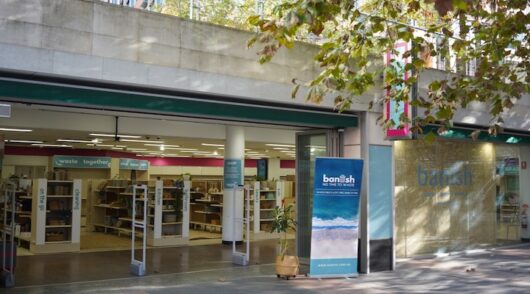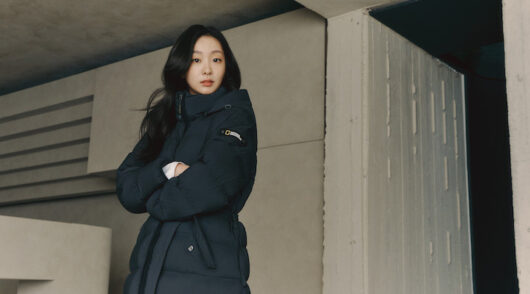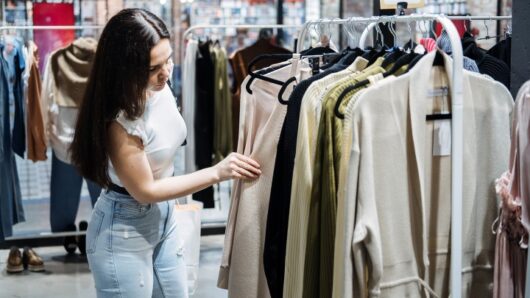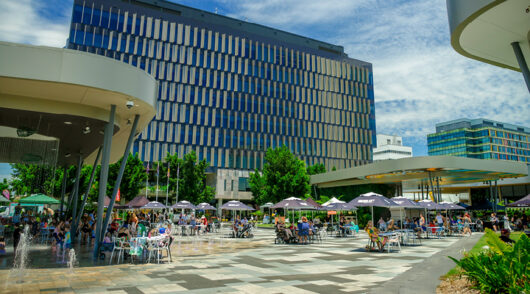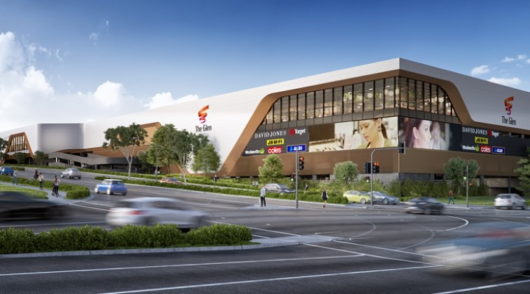I once showed a value clothing retailer a mixture of photos of their stores and their competitors’ stores and they were unable to recognize their own.
We were all quite shocked, but it wasn’t that surprising. The more we value engineer our stores to take advantage of every available cost efficiency, the more generic they become.
The result is a vanilla coloured fluorescent-lit box with standard issue wall and floor fixtures.
This is how value retailing tends to be built. We give the customer low prices and sacrifice store experience to subsidise this. The ultimate outcome is a row of undifferentiated shops, all with sale signs.
We need to stop thinking of store building as a cost base and start to think of it as an investment opportunity. A client once showed me this formula*:
Value = Product range + shopping experience / Price
You can see that price is important, but it’s just part of the formula. It’s clear that given the right range, price is not the only differentiator, but can be calibrated against the experience on offer.
Here are some examples, ranging from value through to luxury, that I saw in Paris this year.
Tati
Value clothing retailer, Tati, has rethought its store experience.
Originally bargain hunter’s bazaar full of dump bins that was every French shopper’s guilty pleasure, it has evolved into a fast fashion offer that approaches Primark in its sophistication.
The prices are still low but it has still incorporated various low budget and fun elements that add to the cheap chic experience.
This is apparent from the windows, which show a striking and sophisticated fashion story, until you get close and realise that the dresses start at 7 euros.
The lingerie department is particularly inviting, with trompe l’oeil wallpaper imitating an upholstered boudoir. There’s more fun at the end of the shopping journey, with a large and colourful bonbons wall, which no doubt contributes to incremental sales.
Hermes
At the other range of the value scale is Hermes. With eye watering prices for handbags and scarves, the experience factor can, and should, be scaled up to create the value.
Where luxury brands tend to be represented in conservative, traditional environments, Hermes have broken the mold by taking a space on the Rive Gauche that was once a swimming pool and creating a breathtaking walk through sculptural experience. Not only does the brand appear to be innovative and forward looking, it is also approachable and casual.
The entry is low key, with a flower stand incorporated in the single storey lobby area.
The opening out of the three-story space with its huge basket like structures provides one of the best examples of surprise and delight that I have seen in retail. Even more amazing is that the sculptures have been described as “disposable.”
I can’t wait to see what comes next.

Hermes
Etam
Right in the middle of the value chain is a flagship store by lingerie and clothing chain Etam.
As a middle market player you would expect to find them squeezed between players like Tati on the value side and the more premium French offers like Simone Perele on the luxury side.
What they have done is develop their own personality and celebrate their playful side.
Instead of the usual pragmatic stripping and slatwall, you have a collage of recycled boxes, small LCD screens, sculpted trees, and a dry cleaning rail that circulates bras and underwear around the ceiling.
There are still value tables and ‘three for’ deals but the experience is so refreshing and different that value is instantly added.
Downstairs things get a little more curvy and sensual, but there are still playful touches and fun uses of digital wallpapers to define collections.
The dressing rooms are at the centre of the floor, and use fabrics, fun wallpapers and thoughtful lighting to enrich the experience.
After all, converting sales in this area is all about looking good in your underwear; lighting in particular is vital to increasing sales and profit. One of the exciting things about this store (the highlight of my retail tour of Paris) is that it exceeds expectations.
The investment in creativity, beyond the basics of flooring, ceiling and standard merchandising systems, is a true value add.
You also get the feeling that, like Hermes and Tati, that it’s a work in progress. At any time the wallpaper could change, the sculptures could be replaced, or there will be something different on the dry cleaning rail.
In an era where customers are still keen to go shopping, but are bored with shops, there is a lot to be learned here.
The question isn’t, can we afford to do it, it’s can we afford not to? (*Thanks to Matt Cole from Woolworth’s for the formula)
This article first appeared in Inside Retail Magazine’s April/May 2013 edition. Gary McCartney is the owner of McCartney Design and a regular contributor to Inside Retail Magazine. You can reach him at gary@mccartneydesign.com.au.

